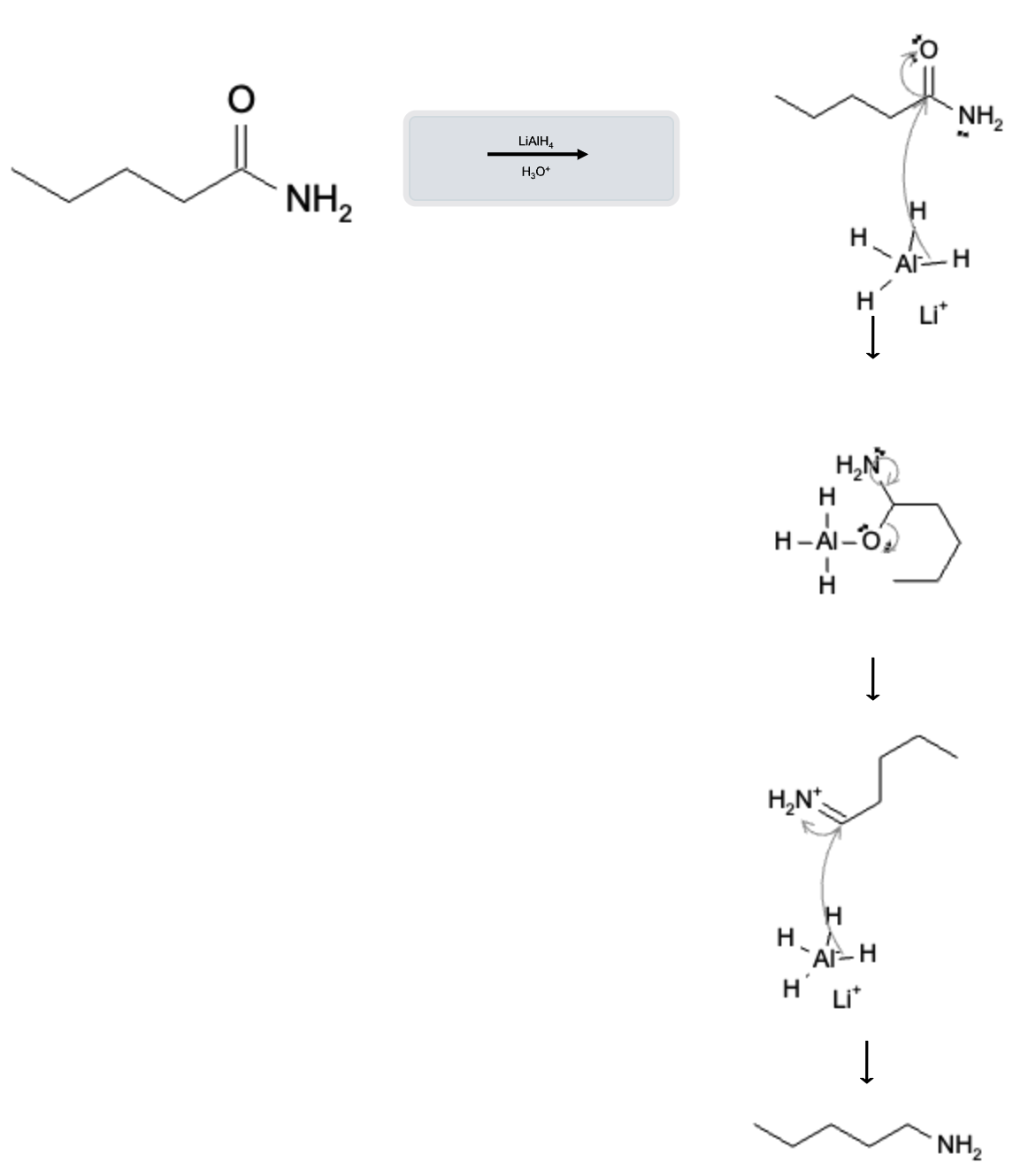Amide Reactions: Reduction of Amides to Amines using LiAlH4
The reduction of amides to amines is performed using lithium aluminum hydride (LiAlH₄) in an acidic environment (H+ / H3O+). This reaction can occur with primary, secondary, and tertiary amides:
Reaction Overview

Reaction Mechanism
The reaction mechanism involves multiple steps, resulting in the conversion of the carbonyl group (C=O) in the amide to a methylene group (CH₂), with the amine group (NH₂) remaining intact:

In the first step, the hydride ions (H⁻) from LiAlH₄ attack the carbonyl carbon of the amide, which then breaks the carbonyl bond and sends the pi electrons to the oxygen atom. The now neutral charged Al atom binds to the negatively charged oxygen atom (not shown).
In the second step, the free electrons on the N atom form a double bond with the carbon atom, which then breaks the bond between the oxygen atom and carbon atom, releasing the alumane hydride (AlH3O-) moiety.
In the third and final step, a second LiAlH₄ H atom attacks the imine carbon, breaking the double bond and sending the pi electrons to the N atom.
Selective Reduction:
LiAlH₄ selectively reduces amides without affecting other functional groups, making it a versatile reagent in complex molecule synthesis.
This reaction provides a reliable method for synthesizing primary, secondary, and tertiary amines, which are important building blocks in various chemical syntheses.
Practice this reaction using our Reaction Solver!